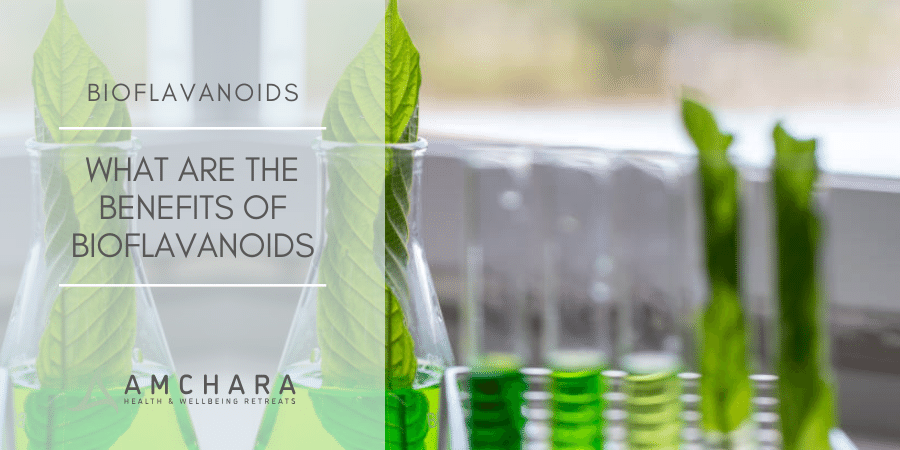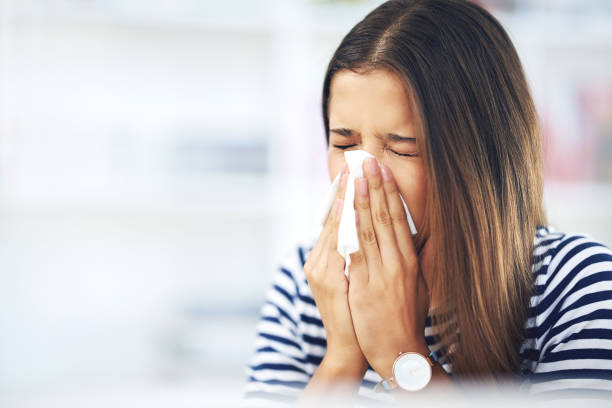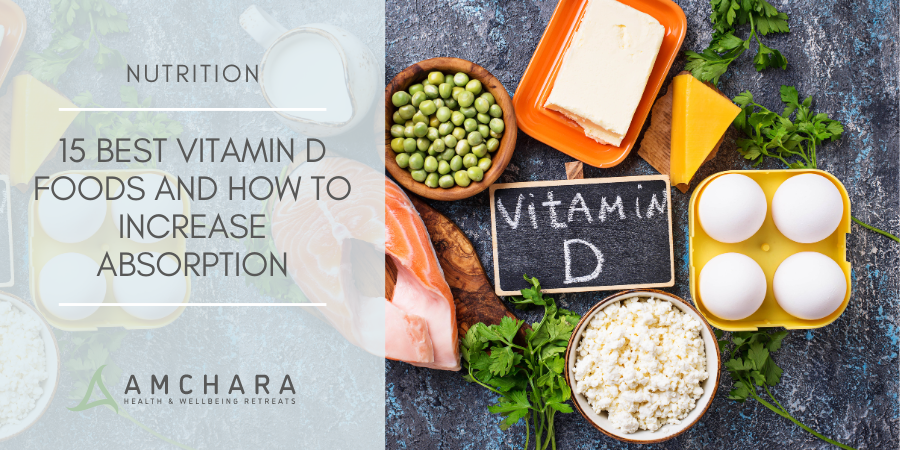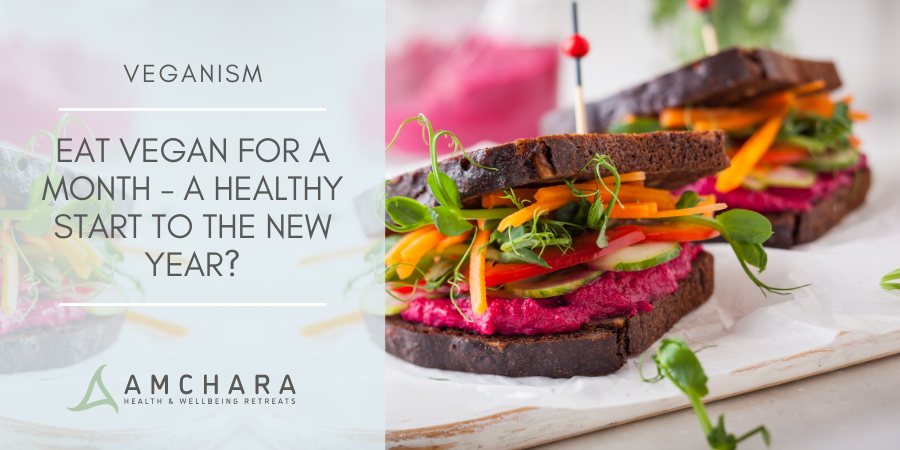Sources of flavonoids | Heart Health | Stomach Health | Bone Health | Flu Prevention
The Bountiful Benefits of Bioflavanoids
The earth that surrounds us is an abundant smorgasbord of plants and vegetation that not only provides us with food and spices to add flavour to our meals, but is also a wonderful medicine chest full to the brim with natural remedies.
Plants have developed very clever defence systems that help to protect them from extremes of weather as well as from insects, birds and bacterial infestations.
Luckily for us most parts of plants including the root, leaves and flowers can also be utilised in the human body to offer the same protection.
Bioflavonoids or ‘flavonoids’ as they are more commonly known, are a large group of phytochemicals, containing polyphenolic compounds.
These important compounds are found in all plants and are biologically active in the body.
Bioflavonoids are just one of the many active constituents of plants, but cannot be categorised as vitamins, minerals or dietary fibre.
Nevertheless they offer considerable benefits to humans. The best described and most useful property of practically all groups of flavonoids is their capacity to act as antioxidants.
In addition to their potent antioxidant properties they also exert other positive influences on health, which includes liver protective, anti-inflammatory and anti-ulcer actions, as well as having anti-allergic and anti-viral properties.
Their versatile benefits extend to protection against vascular and heart disease and in some animal studies they have also been shown to slow down the growth of tumours.
As well as this, flavonoids help to regulate hormones such as androgens, oestrogens and the thyroid hormone.
Flavonoids are known to enhance the effects of ascorbic acid and supply the greatest quantity of dietary antioxidants, the majority of which are more powerful than vitamin E or C.
They can also act as chelator, which means they can attach themselves to a damaging transition metal such as copper and iron, and carry them out of the body. Useful to know if you’re planning on embarking on a detoxification programme. Their wide range of biological actions means that potentially they can have highly beneficial therapeutic uses.
Together with carotenes, flavonoids are also responsible for the colours of fruits, vegetables and herbs.
The plants with the highest levels of flavonoids are those coloured dark green and rich in chlorophyll.
Scientists have discovered over 4000 structurally unique flavonoids from plants.
These are mostly found in the woody, external portion of plants, skin and seeds. Plants and spices have historically been used in traditional eastern medicine and many have been the subject of intensive animal studies and laboratory investigations.
Common family members include:
Flavones, Flavanols, Anthocyanidins, flavanones, flavanonols and isoflavones.
Flavonoids are the pigments responsible for the many shades found in foods, so it’s important to select a variety of different coloured fruits and vegetables including red, orange, yellow, green, blue and purple. This cocktail of colours should ensure you obtain maximum protection.
Good sources of flavonoids are:
| FRUIT | VEGETABLES | HERBS | MISCELLANEOUS |
| Strawberries | Cabbage | Milk thistle | Dark chocolate |
| Currants | Onions | Thyme | Grape seed extract |
| Blueberries | Tomatoes | Tarragon | Green Tea |
| Red grapes | Peppers | Rosemary | Black Tea |
| Hawthorn berries | Greens | Peppermint | Red wine |
| Peaches | Dried beans | Parsley | |
| Pears | Soya beans | Oregano | |
| Plums | Fennel leaves | ||
| Apples | Coriander leaves | ||
| Citrus fruits | Chives | ||
| Cherries | Horseradish root | ||
| Rhubarb | Watercress |
Bioflavonoids and Heart Health
Flavonoids have been found to suppress inflammatory progression in the artery walls and reduce the build-up of unhealthy cholesterol. Studies suggest this may protect against coronary heart disease.
Bioflavonoids and Stomach Health
Quercetin a flavonoid found in capers, onions and cranberries… seems to play a key role in preventing very painful peptic ulcers located in the gastrointestinal tract. Quercetin helps to increase mucous secretion which is vital for protecting the stomach and gut lining. Much of the quercetin content is lost through cooking so keep it raw!
Bioflavonoids and Bone Health
Research has found that tea drinkers are less prone to osteoporosis. Both green and traditional black tea contains a number of different beneficial bioflavonoids and these are thought to be responsible for the improvements in bone mineral density.
Maximise the Bioflavonoids in Your Diet
With all these powerful flavonoids available to you, it makes sense to aim for your 5 a day or even better go for 10 or 12!
Fill your shopping basket with fruit and veggies, experiment with herbs in your cooking and maybe even grow some of your own. Herbs are easy to grow with a good supply of water and sunlight and can fit easily on any windowsill.
Upping your bioflavonoid content is easy if you add smoothies, salads, soups and fruity snacks to your diet and enjoy regular cups of tea!
Read more about flavanoids:
- https://www.hindawi.com/journals/tswj/2013/162750/
- http://www.whfoods.com/genpage.php?tname=nutrient&dbid=119
- Do flavonoids reduce cardiovascular disease incidence or mortality
Flavonoids and Microbes for Flu Prevention
It seems that some of the well-known superfoods are not just good at digesting our food but can have much more far reaching effects on our health due to hard working bacteria in the gut….
People are beginning to understand that certain substances in our food like flavonoids have protective health benefits and help to regulate the immune system; however new research has identified that flavonoids may also be working with the help of gut microbes to protect us from flu and other viral infections.
Researchers from the Washington School of University Medicine were able to single out one specific type of bacteria that made use of flavonoids in foods to boost interferon – a signalling molecule that aids the immune response.
This mechanism was able to prevent the damage associated with the influenza virus on the lungs of mice used in the experiment. Damage of this kind often causes significant complications in individuals with pneumonia.
The microbe used by the researchers Clostridium orbiscindens was able to degrade the flavonoids to produce a substance called desaminotyrosine (DAT) that could enhance interferon signalling.
Medical experts believe that DAT could be a useful therapy because it targets the immune response to the virus rather than the virus itself and could potentially help to keep people from getting more ill should they become infected.
Identifying other gut microbes that may use flavonoids to boost immune function offers hope for future therapies.
In the meantime topping up on flavonoid rich foods such as black tea and blueberries as well as maintaining optimal levels of healthy gut bacteria may be the best way to keep healthy during the next flu season!





